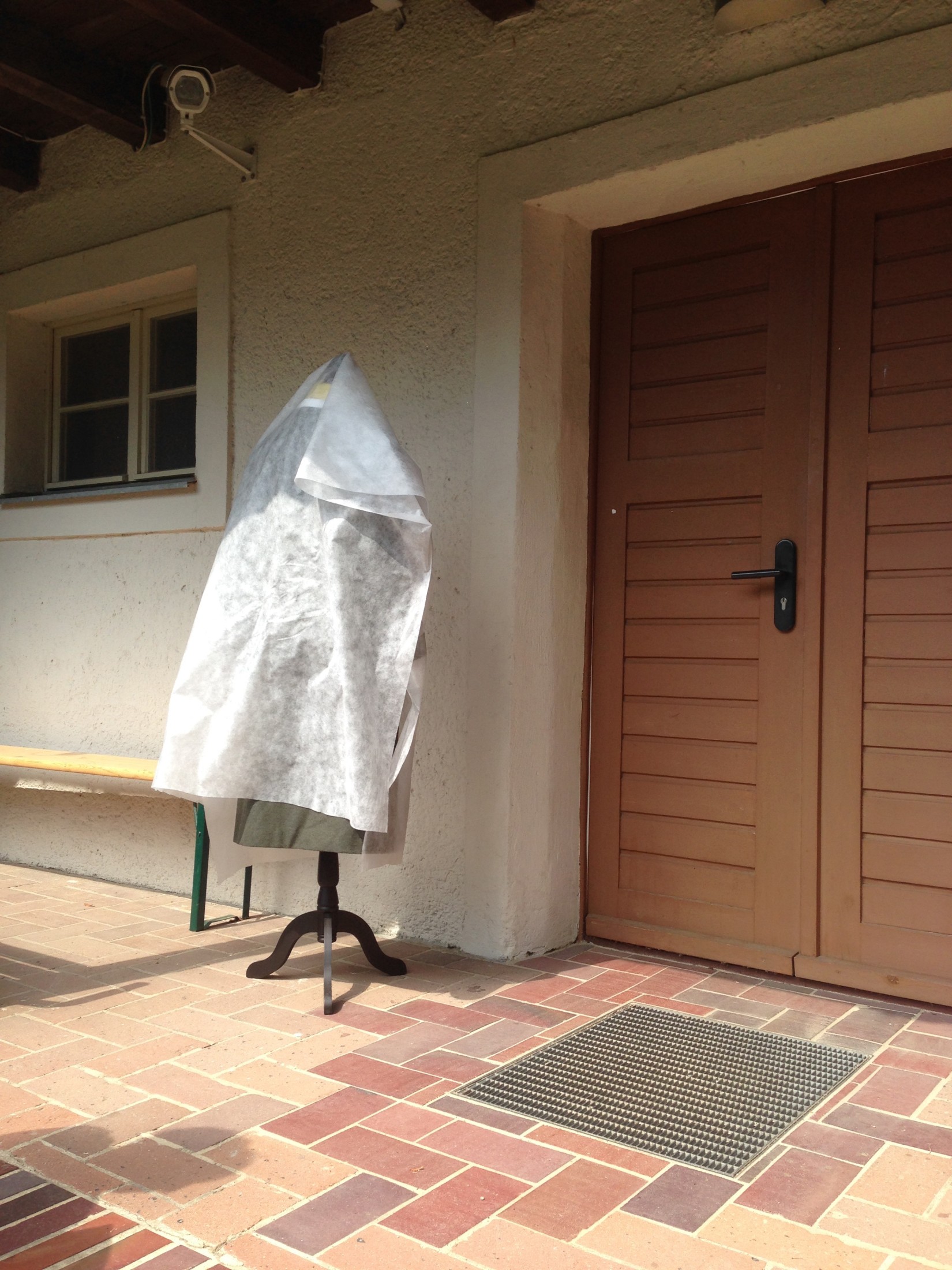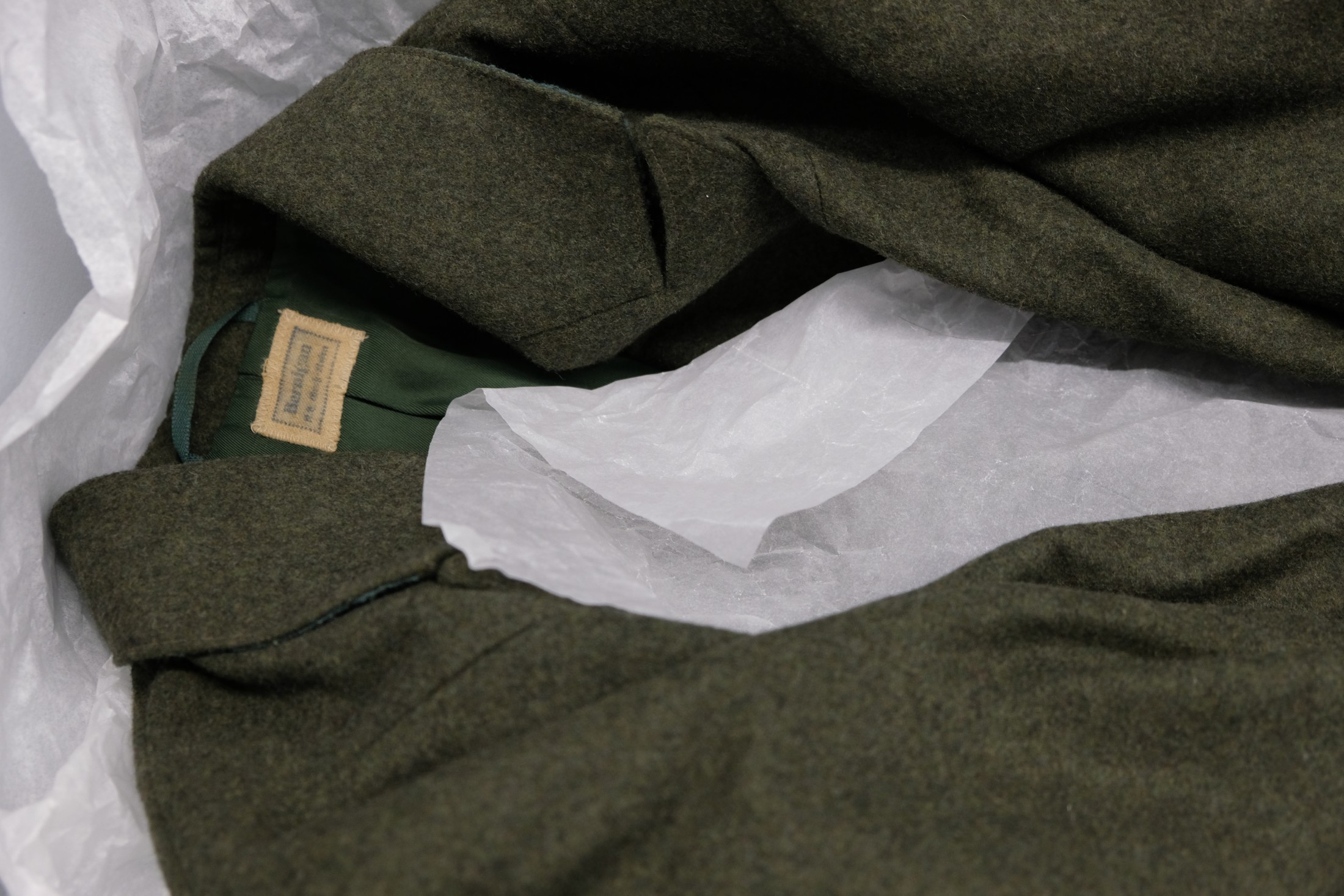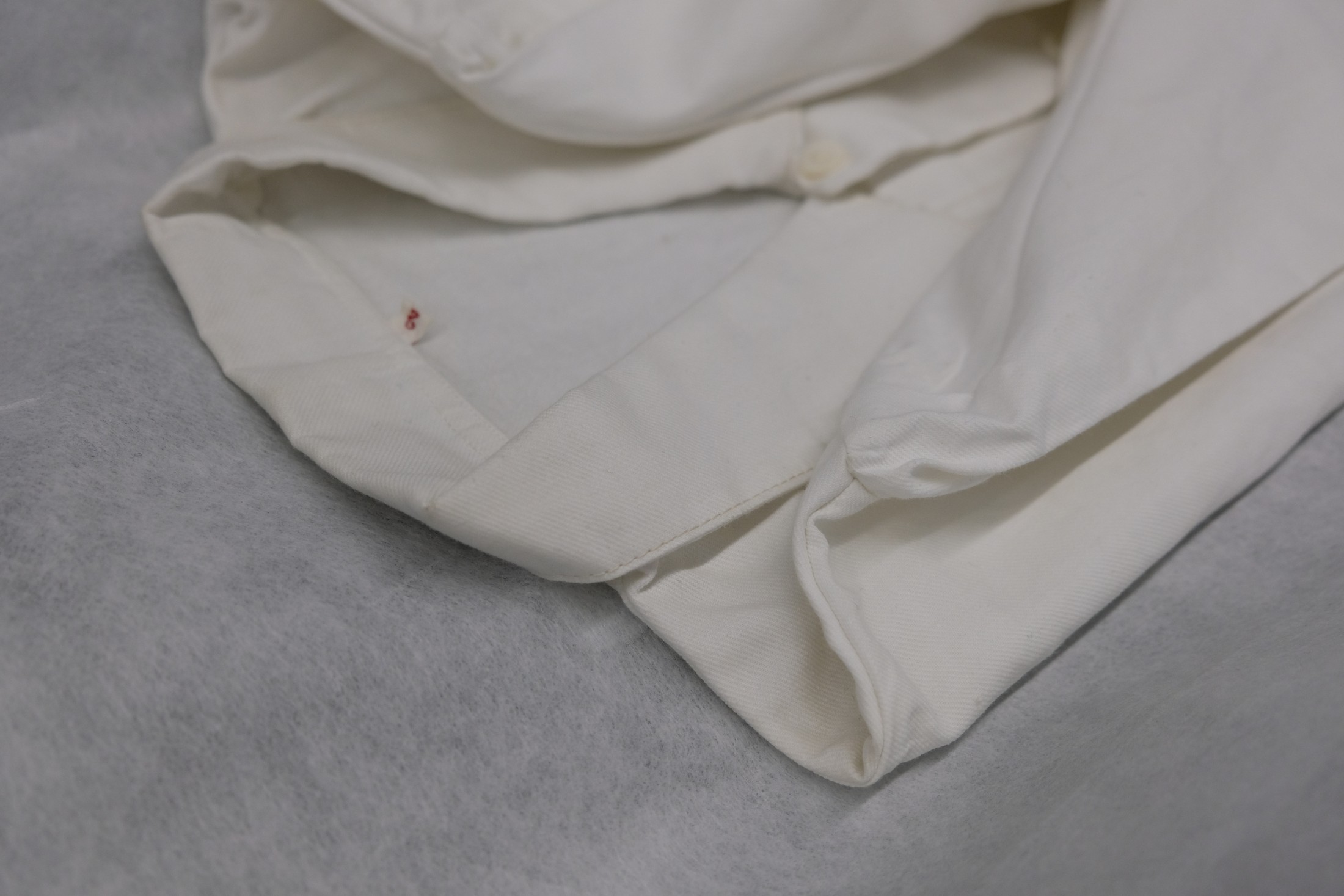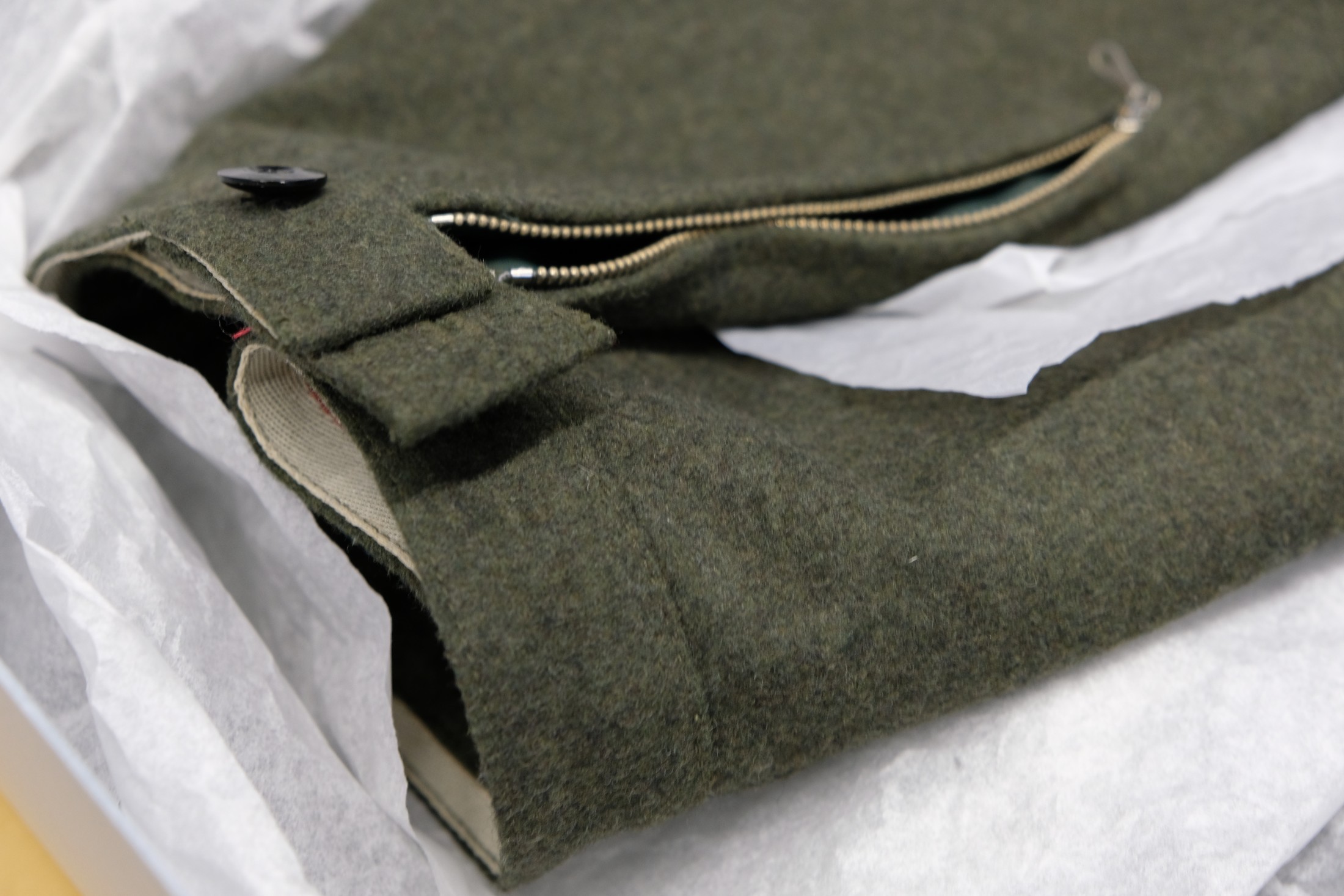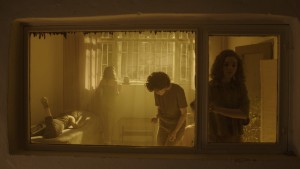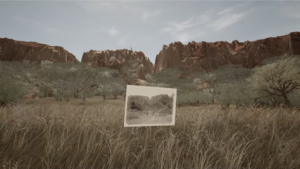Dominique Hurth
Textile history and cultural appropriation of the female guard uniform
Between 1939 and 1945 around 3340 mainly young women worked as female guards at the Ravensbrück women’s concentration camp (one hour North from Berlin), which served as the main training facility for female guard staff for all the concentration camps. The female guards were not members of the SS; rather, they were part of the Waffen-SS auxiliary, in other words they were contractually committed to work at the service of the SS.
Expanding on her long-term research on the female guards, the focus of Hurth’s project is to examine and question the representation and narratives of female perpetration, its imagery and stereotyping in “popular culture” and the examination of female perpetration in the post-War period until today. Her research starts from, expands on and returns to one object: the female guard uniform, as the one held in the collection of the Ravensbrück memorial.
Unlike the male uniform of the SS guards or that of the Wehrmacht soldier, the object of the female warden uniform has hardly been historically researched. At the same time, the female concentration camp warden in uniform triggers a huge fascination in film, fashion design, literature, pornography or the internet. This gap between the lack of sources and material knowledge about the textile history of the uniform (Who designed it? By whom and where was it produced? Where is the cut?) and the presence of the uniform in the subculture up to the mainstream, underlines previously prevailing gender stereotypes.
Hurth suggests looking closely at the textile history, the production and object biography of the uniform, informed by dialogues with protagonists from several disciplines, aiming thus to counter-act the prevailing fictionalized iconography and highlighting notions of forced labor, violence and gender representation contained within the uniform itself.
Dominique Hurth is a visual artist working with installations, sculptures and editions. The starting point for new works is often a narrative present in localities or images. Even though her installations are often concentrated on the form, a long and detailed research is strongly embedded in the development of this same form. It is by ways of archival research, journalistic investigation, writing and material experiments that the works develop, and it is by way of editing that the installation operates in the exhibition space. Her work was exhibited in several museums, galleries and institutions internationally (i.a. Palais de Tokyo, Paris; Hamburger Bahnhof, Berlin; Fundacio Tapies, Barcelona; Memorial of Ravensbrück, Fürstenberg/Havel; Württembergischer Kunstverein, Stuttgart) and is part of several collections. She is the recipient of several awards and residencies such as the Pollock-Krasner Foundation Grant (2016-17) and Prize of the Berliner Senate / Governing Mayor of Berlin at ISCP, New York (2014). Her latest book entitled “Stutters”, published and commissioned by Printed Matter (NYC) was launched in July 2021. It focuses on several years of archival research in the photography collection of the Smithsonian Institution, Washington, D.C..
